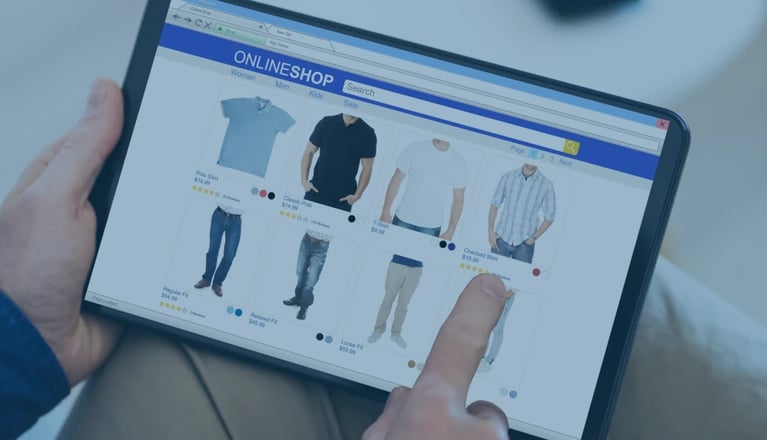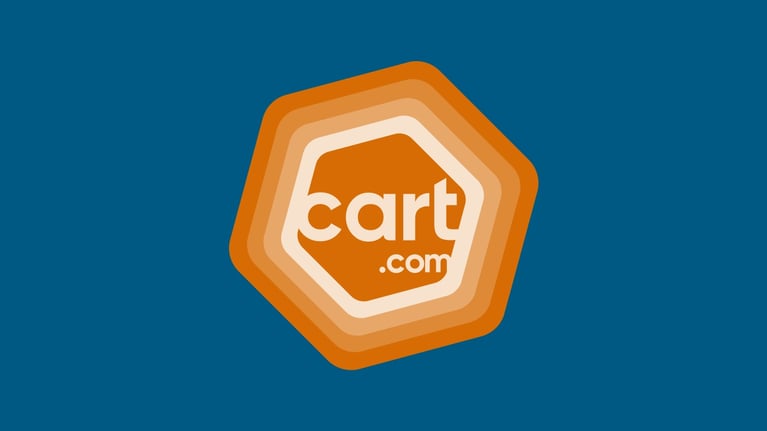Designing a website can sometimes feel like writing an essay without an assigned subject. There's so much you could do that you don't know what you should do or even where to start. Moreover, you may worry that, without a formal education in web design, you won't be able to make something that can convince people to visit your site over giants like Amazon and eBay.
While web design does indeed take a lot of time and effort, it shouldn't stop your website idea from reaching the world. Keep reading to learn about the general process of web design and some tips that will make it much easier.
The impact of an effective web design process
A strong web design process helps you make a good impression on visitors to your website and encourages them to keep coming back. Conversely, poor design will cause most visitors to leave your website before even looking at the content. That's why it's okay for your web development to take a long time and why you should continue reviewing it from time to time to make sure it's as useful as possible for your ideal consumers.
What does web design entail?
Web design is a longer process than just making your website look good. You can actually break it down into four web design process steps:
Planning phase
The planning stage is one of the most crucial steps, the stage when you outline what you want your site to be. Is it a blog? Is it a portfolio? Will you use it to sell something? You'll also think about who your ideal audience is and how your website's design can give them the best visitor experience.
A lot of research goes into this phase. Once you know what the site is and who it's for, you can look through similar websites and note what you like and dislike. Any guest comments that give critiques of the websites are also valuable if the customers are part of your ideal audience.
Design phase
In this phase, you map out what the site will look like. Many people like to draw and connect all their different website pages so they can make changes easily and figure out what looks the most appealing. You can experiment with different color schemes, fonts, graphics and layouts, making sure everything looks good before you start developing the site.
Development phase
Now, you're into the development stage, making your website look the way you've drawn it. If you use a hosting platform to make your website, you'll likely have access to some customization tools that don't require any specific education, but building these skills will help you a lot:
- Coding. Coding is a powerful skill that lets you make your website run exactly how you want it to. If you're a skilled coder, you can add custom animations and assign detailed functions to different objects on your page to improve the visitor experience.
- HTML. This is the programming language you use to structure the static elements on your website, such as colors and text alignment.
- PHP. Dynamic websites and web applications use this server-side scripting language to store and retrieve information from a database without letting the client see the code you used. It can run functions like sending emails and populating content into HTML skeletons.
Once you've built your website, you should test it before you release it to the public. Tests help you find errors that might occur in uncommon corner cases, and you can fix them before someone else discovers them.
Launch phase
Now that you're done with the web design and development process, your website is ready for launch — though it's advisable to do a soft launch first, where you launch the site but don't let anyone know so you can fix any bugs before the public sees it.
After launch, you need to keep monitoring your website, updating content and fixing new bugs that pop up over time.
Once you build a user base, you may also find that some design elements don't get the reaction you were expecting from frequent visitors and site members, so you may need to change parts of your site's design to better suit them.
10 ways to simplify the process of web design
Web design is tricky, especially if you don't have much experience with it. These tips should help make the process easier for you, though.
1.) Identify your goals for your website.
Setting clear goals for your website in its initial stages helps you measure its effectiveness. Use the questions you asked yourself in the planning phase to guide your goals. For instance, if you're making a portfolio website, your goals may be to generate more leads and get people to sign up for a newsletter or an appointment.
All your goals should be SMART — specific, measurable, achievable, realistic, and time-bound. That way, you know when and how you'll evaluate your site, along with the key performance indicators (KPIs) that you'll use. You can easily set new goals after your evaluations.
When you set new goals, also consider if your KPIs accurately depict your website's performance. For instance, you may have reached a goal for your new ecommerce website to generate a certain number of leads in a month, but your number of purchases may not have increased. In this case, you could change your goals for the next month to converting more leads or finding higher-quality leads who are more likely to buy something.
2.) Consider putting together a document compiling design inspiration.
Documenting all the different design ideas you've collected from your research helps you remember all the points you've observed. In your document, you could list the websites you like the most and least so that you can check them out again in the future and see how they're doing and reevaluate your opinions.
The document also gives more structure to your research. For instance, you can organize your observations into different sections, like visitor experience, functionality and aesthetics. Creating these categories can give you criteria to help you analyze the websites you research more deeply instead of just finding sites that generally look good to you.
3.) Don't forget to optimize for mobile devices.
Today, more people access the internet from a mobile device than from a desktop. Your website can't just look good on your computer screen — it needs a responsive design so it looks good on a pocket-sized screen as well. Remember to check out your site's core web vitals from your phone or tablet. Make sure that the text is readable, pages are easy to navigate, and load times are quick.
To optimize your site for mobile, you may need to remove some of the digital features that you use on your desktop website, like plugins that might easily clutter the smaller screen. Fortunately, more website builders today show you how your website looks on mobile devices and offer mobile-optimized themes.
Some ways you can optimize your website for mobile include:
- Testing your site on Google's Mobile-Friendly Test tool, which will let you know about any limitations of your site's mobile optimization
- Using custom CSS, called "media query" ranges that load different page layouts depending on the screen size to make your site responsive
- Using responsive themes and plugins available on your website builder
- Speeding up your site's loading times with methods like implement-caching, compressing images and minifying code
- Redesigning pop-ups for mobile devices by making them cover only a small fraction of the screen and including a clearly visible, decently large close button
4.) Keep your search engine optimization (SEO) strategy at the top of your mind.
SEO is a digital marketing strategy that makes a website look as good as possible to a search engine. That way, when someone searches for something that relates to a page on your website, the engine will rank it higher in its results.
You may have heard about using keywords — words or phrases that you include on a page so that your page ranks higher when someone searches for that word or phrase. This is an extremely valuable aspect of SEO, especially if your website uses content marketing. Each page you want people to find should have at least one "focus keyword" that is the page's subject. This keyword could be a blog post's topic or the name of a product on a product page.
Other SEO elements to think about include:
- Meta tags. These are HTML formatting elements that make your page more readable, like lists, header levels (h1, h2, h3) and tables. Make sure that each page only has one <h1> tag because search engines expect this to tell them the page's main topic.
- Page speed. For search engines, the page speed indicates quality. If your page takes more than a second to load, people will get impatient and find a different one. You can use Google's Page Speed Insights Tool to get suggestions on how to speed up your page load times.
- Backlinks. Backlinks are links to your website from other sites. Search engines see a page with a lot of backlinks as a domain authority because many people are citing it, so they rank it higher. It takes time to build up backlinks, but one way you can speed up the process is to reach out to other site owners at a similar level in your field and offer a backlink to their website in exchange for one leading to yours.
5.) Outline essential elements and core functionalities of your site.
It's easy to get distracted by all the plugins and design features you can add to your website, but overindulging can weigh your website down and lose some of its core functionality.
Outlining the elements essential to your website helps you maintain the right focus so that the features you add benefit the purpose of your site rather than becoming the main attraction. This will also guide your organization of navigation links so that the main functions of your website take priority.
Having this list will be helpful when you need to identify expendable elements on your page that reduce your page speed or mess with your layout on mobile devices.
6.) Focus on the impact on user experience.
A good user interface is one that visitors like using and want to return to, so the decisions you make should consider the effect on user experience. To do this, think about why someone is going to your page and how they'll use it.
For instance, people usually want to scan a page rather than read everything on it. So, to make your page more scannable, you should minimize the text on your page and use HTML formatting elements and your page layout to break things up. Images and graphics are also visually interesting ways to make a page more scannable.
Some other points to consider for user experience include:
- Simple, clear design. The visitor's journey through your website should be simple. If they want to go to your homepage, then to your store, then to your blog, they shouldn't be permitted to get lost along the way. Reusing aesthetic elements like colors for objects with similar functions is one easy way to make your site easier to use.
- Visual hierarchy. If you want to call attention to something, highlight it so that people focus on it. You could do this by making a "click here" button a color that isn't part of your page's broader color scheme, for instance.
- Conventionality. When you design something, it's tempting to try to break all molds and make something completely original. However, doing this recklessly can disorient visitors, who expect websites to follow certain common conventions, like having a clickable logo at the top of the page that takes them to the home page.
7.) Make the process collaborative.
Getting multiple opinions on a design helps you make a website that looks appealing to everyone. If you can collaborate with someone on your web design, you also reduce the strain you might otherwise face.
If you do collaborate on the design and development processes, though, make sure everyone in your team understands and agrees on the goals for the website. You should communicate with each other routinely to make sure everyone's still on the same page (literally).
Even if you don't collaborate on designing the web page, you could ask people close to you and people you know within your site's niche to try using your website and give you feedback. As someone who knows the design intimately, you may not recognize certain challenges that other users could face, so getting extra opinions is always useful.
8.) Make ample use of visual content.
Visual content like images, videos and graphics are more interesting to look at than just text, inviting people to stay on the page. People pay more attention to information in visual elements than they do to text on a page.
You can break up simple text with visual design elements, like placing pro tips in a brightly colored box on your blog posts. This makes your content feel easier to get through, boosting your retention. Deliberate, consistent use of these kinds of elements also increases your brand recognition, as long as you're doing it in a way that feels unique to your site.
Another way you can enhance your website is by adding texture to your backgrounds, making them feel more tactile. For instance, a school website might use a black background with a texture that makes it resemble a chalkboard, immersing the visitor in the subject matter.
9.) Use design tools to simplify the process.
There are a lot of tools available online that can help you design your website. Some great ones to check out include:
- Bubble. This software helps you build sophisticated apps and workflows so you can give visitors an interactive experience. Its user base is a community of budding entrepreneurs, so it also offers courses and tools that can help you grow your business.
- Webflow. This tool is great for people who don't understand how to code, giving them a convenient, streamlined framework to build custom sites with. Its design, animation and content management tools will give your site design a leg up.
- Canva. If you want to make graphics but don't have much graphic design experience, Canva is extremely user-friendly and teaches you how to use all of its tools. It also has its own website builder that you can share with your team and customize with your own graphics and free elements from its library.
10.) Remember to integrate Google Analytics.
Integrating your site with Google Analytics gives you access to a lot of valuable data that should inform your web design. It can track how visitors use your website, including:
- How far down a page they scroll
- Where they get stuck on your site
- Actions they take that lead to conversions
- Interactions with specific parts of your website like button clicks or form submissions
It all starts on your website. Go about designing it the right way.
The internet has made it much easier for anyone to start a business, but that also means you have to compete with a lot more brands to gain an online presence.
If you want to make sure your web design stands out, book a demo with Cart.com to learn about our web design services and how our design team can help you present your brand exactly as you envision it. We'll help you bring your site to life.





